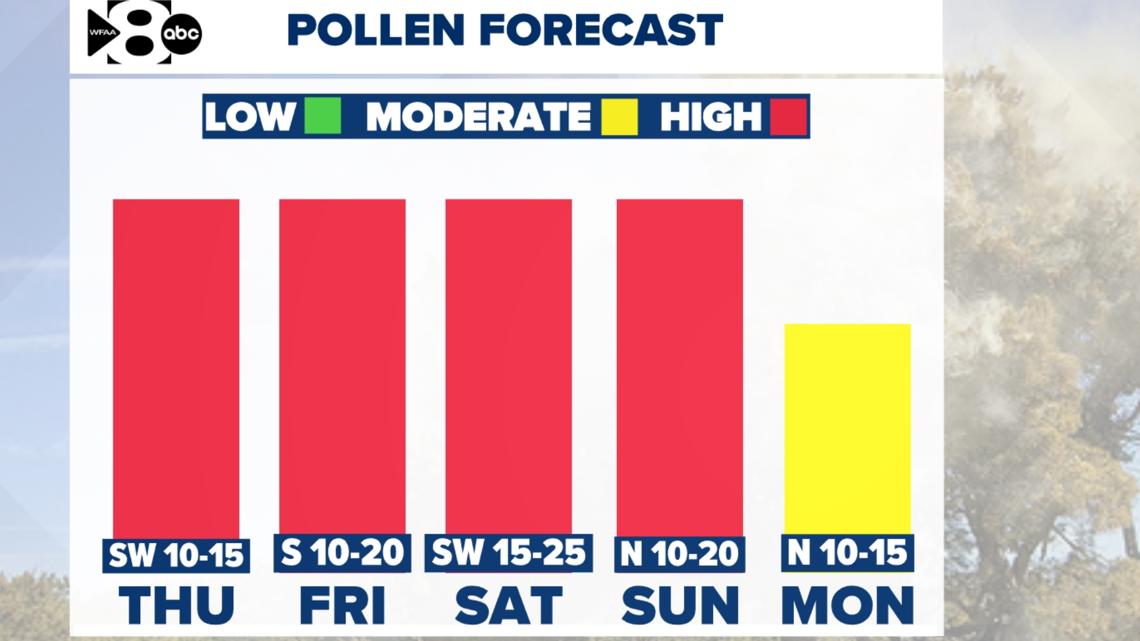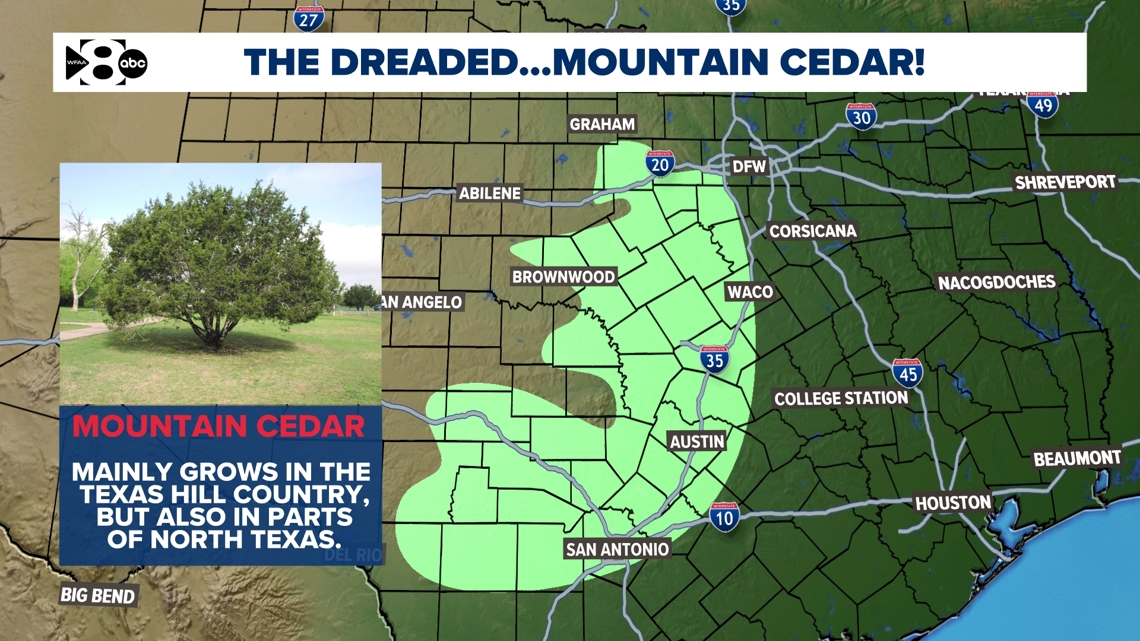Mountain Cedar Pollen peaks in early February. Here is a look at the current levels, the pollen forecast, why it is here, and a few ways to combat Cedar Fever.
DALLAS — Oh, the dreaded mountain cedar pollen. If you’ve been sneezing, itching, or dealing with a stuffy nose lately, you’re not alone and chances are it is the pollen. Many refer to the symptoms as “Cedar Fever.”
Pollen Levels and Forecast
Mountain cedar trees, also known as Ashe juniper trees, are notorious for releasing large amounts of pollen during the winter months. Typically, peak pollen levels for mountain cedar occur in early February. This year, early February is no exception, with pollen counts expected to remain elevated in the coming days. In some parts of North Texas, pollen levels could soar into the very high range, potentially causing major discomfort for allergy sufferers.
While the worst of the cedar pollen season should taper off by late February, it’s important to note that pollen counts can fluctuate depending on weather conditions. Mild, dry days with gusty winds are ideal for spreading pollen, while cooler, wet weather can help reduce the airborne pollen levels temporarily. However, even a brief break in the weather doesn’t offer much relief for those sensitive to mountain cedar.


Where Mountain Cedar Trees Are Common
Mountain cedar trees are prevalent in North Texas and particularly thrive in the Hill Country and Central Texas regions. They are most common in areas with rocky, well-drained soil, and they can often be found in abundance around cities like Austin, San Antonio, and northward toward the Dallas-Fort Worth metroplex. These trees are notorious for producing pollen in large quantities, and their pollen grains can travel for miles on the wind, making it difficult to escape their reach.


Tips to combat Cedar Fever
For those who suffer from cedar fever, there are several ways to reduce symptoms and find some relief during this pollen-heavy season:
-
Stay inside during peak days & limit outdoor activities on high pollen days
On high pollen days, try to stay indoors during these hours, particularly if the weather is windy or dry. Checking daily pollen forecasts is crucial. On days when pollen levels are high, try to limit outdoor activities, particularly strenuous exercise that may cause you to inhale pollen. -
Keep windows closed
Pollen can easily enter your home through open windows, so keeping them closed, helps minimize exposure. -
Use air purifiers
A high-efficiency particulate air (HEPA) filter in your home’s air purifier can trap pollen and help improve indoor air quality. Make sure to change the filters regularly. -
Take allergy medications
Over-the-counter antihistamines, nasal sprays, or decongestants can help alleviate symptoms of cedar fever. Be sure to consult with a healthcare provider before starting any new medication. -
Shower and change clothes after outdoor activities
If you’ve been outside, especially in areas with heavy cedar pollen, make sure to shower and change your clothes to wash off any pollen that may have settled on your skin or clothing.
While mountain cedar pollen can be a nuisance for many North Texans, with a bit of preparation and the right precautions, it’s possible to minimize the effects of cedar fever until the season passes.